Finding the right balance of jackets for mountain adventures is a difficult task. A waterproof jacket is an essential item of clothing, and a warm down jacket helps when the cold weather bites back. But hiking is active and dynamic with different temperatures, weather and terrains to tackle. A reliable, breathable and warm mid-layer jacket prepares you for whatever is thrown at you. I was willing to invest in a synthetic midlayer with the Arc’teryx Atom and Arc’teryx Proton being top contenders. Find out why the Arc’teryx Proton LT Hoody is my favourite hiking jacket and is better than the Atom.
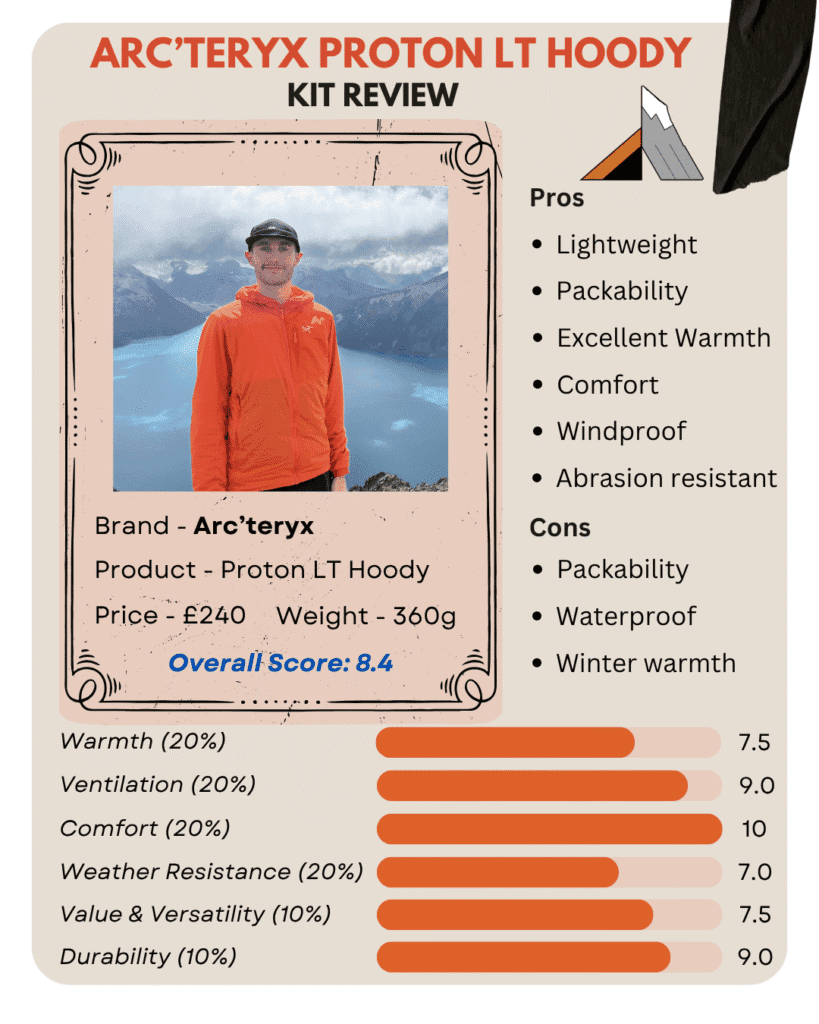
Introducing: Arc’teryx Proton LT Hoody
The Proton Hoody is part of Arc’teryx’s Proton range, designed for climbing and high-output activities. These products are air-permeable and insulating mid-layers with a toughened and weather-resistant outer. The Arc’teryx Atom Hoody is a very similar model with higher breathability and less abrasion resistance. The Proton Men’s Jacket range used to include the Proton Hoody (Base), Heavyweight (Winter), Hybrid (ski-focused) and Lightweight/LT Hoody (Summer & Spring) variants. However, they streamlined by combining the Base & LT into 1 jacket to create the Proton Hoody. The Proton is ideal as a versatile high-performance jacket for varying conditions and activities. Since purchasing it in 2022, this jacket serves as my go-to outer layer when hiking, climbing or trekking or as a mid-layer when the weather is near freezing under a down-jacket or waterproof hardshell. Unsurprisingly, the Proton features in both of my Ultimate Trekking and Hiking Packing Lists.
Update– Arc’teryx have replaced the LT with the SL (Superlight), but the technical details and design are very similar.
Tip: Use the Arc’teryx Jacket Finder to help narrow down the options!

Arc’teryx Proton LT Hoody
Key Stats
- Outer Material – Dope Permeair liner & DWR water repellent coating
- Inner Materials – CoreLoft Compact knit synthetic insulation
- Fit – Trim & Athletic
- Weight (approx.) – 360g (Men’s Small)
- Price – £240
Key Features
- Moisture-resistant Outer Fabric – FC0 DWR finish repels moisture and is PFAS-free
- Coreloft Compact Synthetic Insulation – reliable thermal performance
- Trim and Mobility– Fitted with articulated patterning for mobility and comfort, elasticated sleeve cuffs
- Hood configuration – Helmet-compatible and adjustable insulated hood with top toggle with Arc’teryx logo
- Pocket configuration – Two zippered hand warmer pockets and a single stretch woven zippered chest pocket
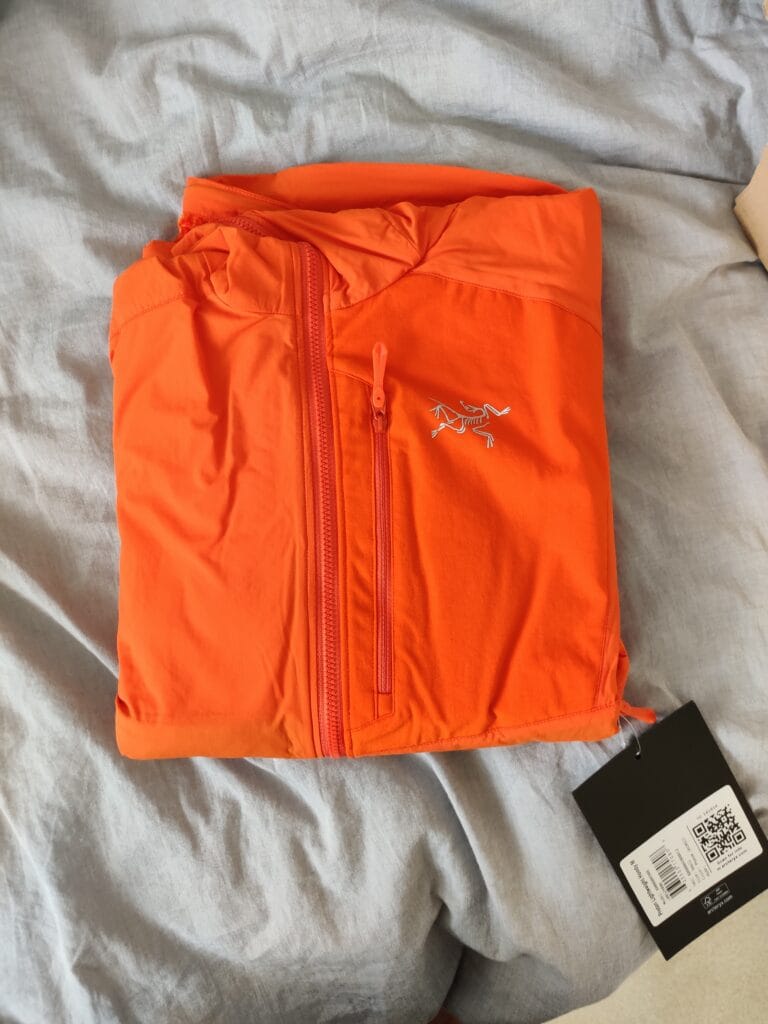
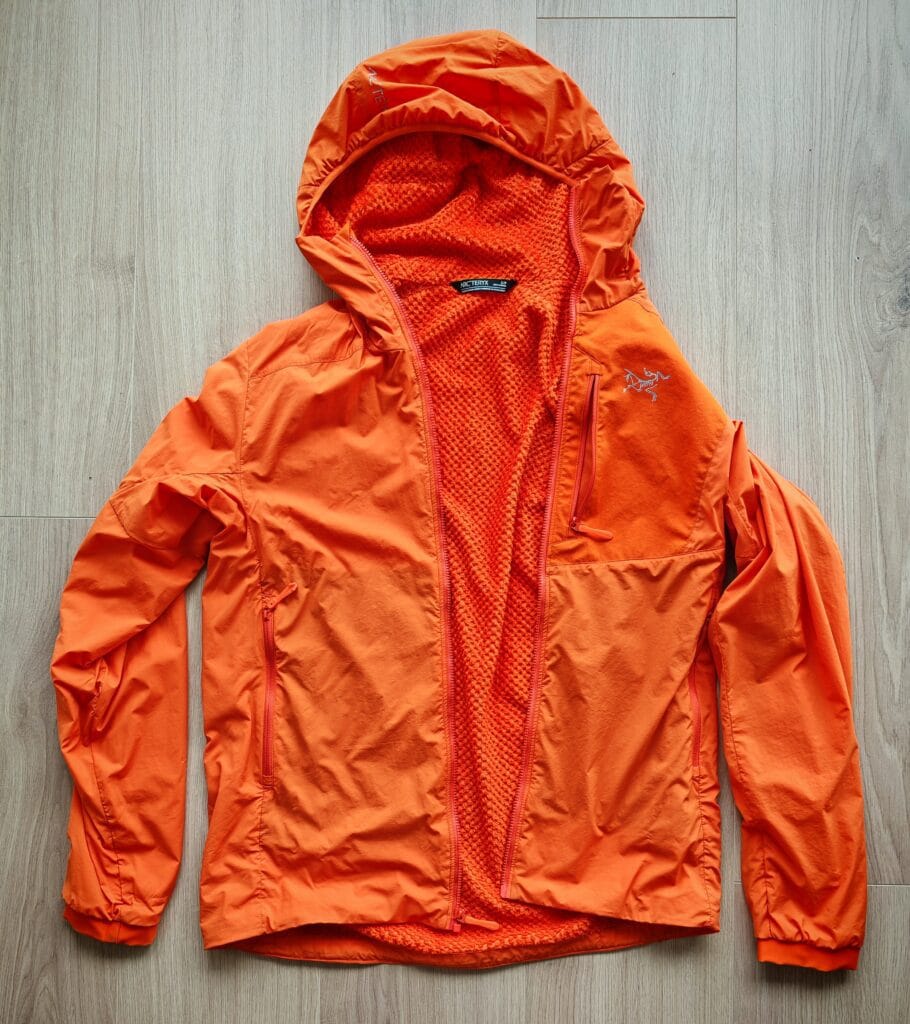
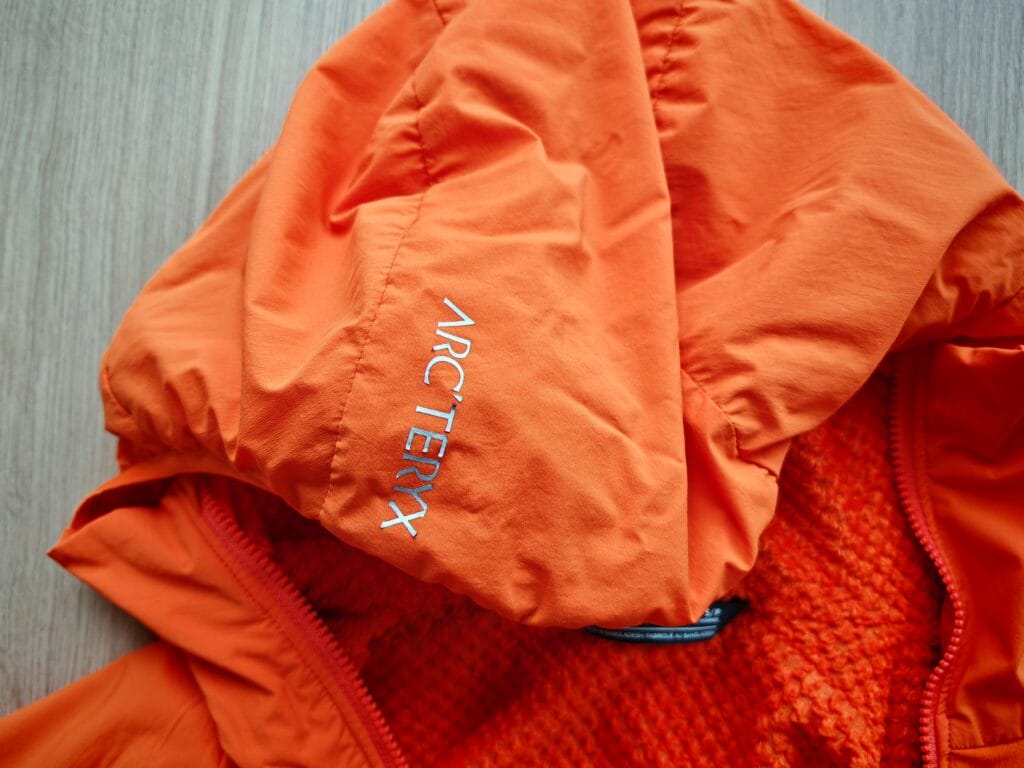
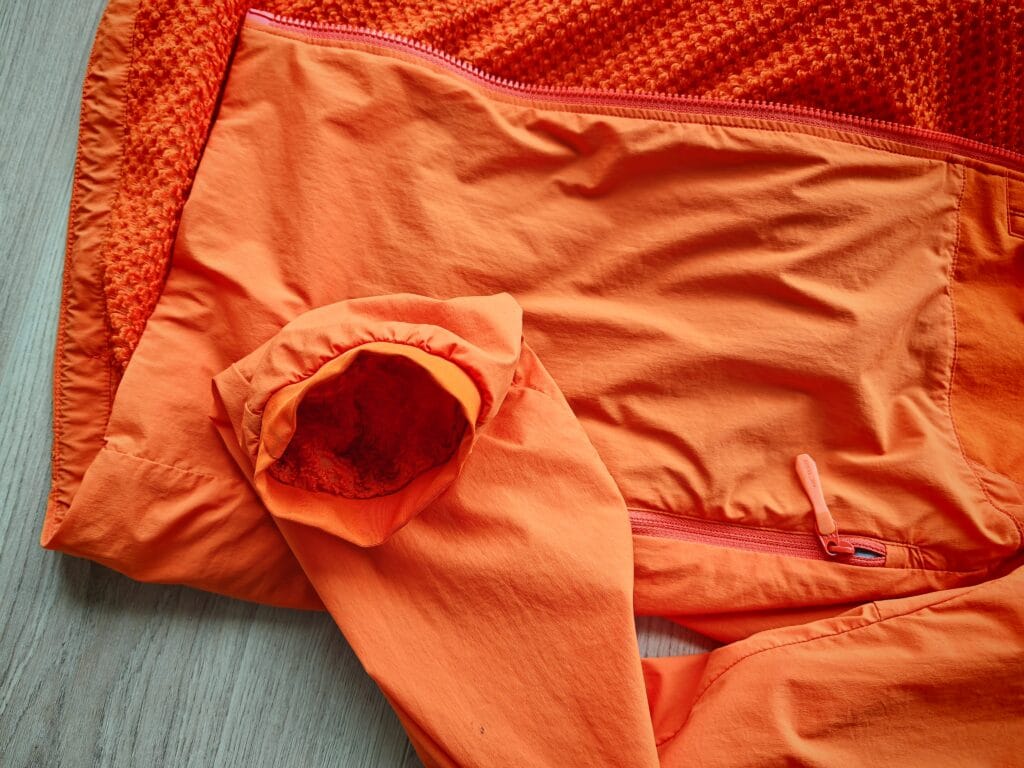
Arc’teryx Proton: Selling Points
Insulation
- The warmth of this jacket is surprising given how thin the insulation feels. An advantage of synthetic insulation over down feathers is the higher warmth when wet. The Proton uses 80g CoreLoft Compact in the body and 60g CoreLoft in the hood as construction. As this is an active jacket, it’s not designed to be super toasty when standing around, but when moving, it will keep you from freezing. It adds great warmth as a mid-layer in winter months and as a top layer in warmer conditions, which adds to its versatility. The Dope Permeair outer keeps the wind chill factor the a minimum.
Comfort
- The softness of the CoreLoft knit inner insulation is one of my favourite features. The jacket has an athletic fit, which suits the high-output activities designed for. There is a good amount of stretch to the fabrics, which helps them not feel stiff or restrict articulation. The inner lining is incredibly comfortable against the skin and does not become annoying when sweating a little. I appreciate the stretch knit cuffs, which keep close to the wrist and prevent any cold air or rain from getting in.
Breathability
- The primary job of an active mid-layer is to help manage body temperature. And this jacket, despite being warm, has excellent ventilation to prevent overheating. I have used this jacket on steep ascents in gusty winds and when on Via Ferrata treks, and so far it has reliably kept me at a comfortable temperature and protected from the elements. The Dope Permeair outer is effective at letting air ventilate out of the jacket in cool temperatures without the need for armpit vents.
Weather Resistance
- The Proton is not a waterproof jacket, but with the DWR coating, it holds up to a shower or light rain. For worse weather, a waterproof shell is required, but the impressive water resistance means it performs well in unpredictable spring, summer and autumn conditions. The hood has a draw cord on the rear and can be adjusted to keep the weather out and the warmth in. Plus is compatible with a climbing helmet as well. The Insulation performs excellently in windy conditions, serving as an outer layer in dry but cool conditions.
Design and Fit
- From the first time I tried on the Arc’teryx Proton LT Hoody, I loved the trimmed fit and feel of the jacket. The Phenom Orange colour stands out on the trail and is distinctive in photos. The 2 handwarmer side pockets and chest pockets are high quality and have deep pockets with soft lining. As mentioned, the knit cuffs keep the sleeves close to the body for an athletic look. And on the chest pocket is the Arc’teryx logo with the hood having a small Arc’teryx script written across it. The overall fit is true to size and does not have excess material to worry about.
Durability and Abrasion Resistance
- I was unsure how durable this jacket would be; however, it has handled weather, scrapes with rock faces and trekking with 50L backpacks with ease. As it’s designed for climbing and backcountry, the outer materials have good abrasion resistance, and I’ve not had any tears when climbing or hiking. The zips have never stuck, and there is no discolouring from the elements.


Arc’teryx Proton: Considerations
Price
- It’s an investment of over £200 for a mid-layer, but the versatility of the jacket helps justify it. With Arc’teryx, there is a premium price tag to go with, but the materials are high quality and will last many years of use. It’s a simple, minimalist design for the money, but it is similarly priced to the competition.
Waterproof
- The Proton LT has a DWR treatment on the outer fabric, which can fend off light rain and precipitation. However, this is not a full-waterproof jacket. The synthetic insulation won’t lose its thermal performance compared to feather down jackets. This midlayer is ideal to work alongside a fully waterproof hardshell jacket such as the Arc’teryx Beta AR.
Packability & Weight
- This is a very lightweight jacket with impressive warmth and ventilation, but there are lighter jackets on the market. If having the minimum weight possible, there’s a trade-off for warmth or using natural Down instead of synthetic insulation. The Proton is comparable to the Atom LT Hoody (370g) but is heavier than the Cerium Down Hoody (306g). Even though there is no integrated stuff sack, the Proton LT packs down very well, but can’t compete with a down jacket.
Summer & Winter Warmth
- The CoreLoft Compact insulation is very effective and, as mentioned, has great weather resistance. But once the sun comes out and the weather is above 15°C, the jacket can run warm even with good ventilation. And whilst great for cooler temperatures, this jacket is not as suitable for freezing temperatures compared to a goose down jacket like the Rab Microlight Alpine.
Alternatives
- Arc’teryx Atom Hoody– The most iconic Arc’teryx product and a staple fashion item in Vancouver. The Atom i warmer than the Proton using a similar Coreloft Compact synthetic insulation with a Tyono 20D outer shell with a DWR coating. The lining is not as comfortable as the cosy Proton and doesn’t ventilate as well. But the Atom is more versatile, yet not as packable. If you’re looking for a synthetic midlayer for casual use and hiking, then the Atom is a great pick. If you want a Jacket more suited to fast hiking, climbing or high exertion activities, then choose the Proton.
- Patagonia Nano-Air Hoody – Uses a FullRange synthetic insulation which provides comparable breathability with a focus on cold weather hiking and casual wear. It has great mobility, but is not as windproof as the Proton. The Nano-Air is comparable in price but closer to the Atom than the Proton.
- North Face Summit Series Casaval Hybrid Hoody – The closest competitor to the Arc’teryx Proton LT in style, function, with a cheaper price tag. It is part of The North Face’s Summit Series, so focused on mountaineering and high-output activities. It is even lighter and more packable, but is very specific in design.
- Rab Xenair Alpine Light Insulated Jacket – Featuring a Prima Loft God Active inner with a Pertex QuantumAir outer, the Xenair is designed for Alpinism and fast hiking. It balances bretahabiity and warmth as well as the Proton with an even slimmer and athletic cut.

Best Use Cases
- Hiking – My main use for the Proton is as an outer shell in dry conditions when the temperature drops. Or as a warm midlayer under a waterproof jacket. It’s the most versatile mountain jacket I own with its lightness, high durability and comfort, meaning it will join me in my backpack each time.
- Climbing – One of its primary designs was for Rock or Alpine climbing with its increased abrasion resistance over the Atom. The jacket has incredible articulation to not restrict movement, making it perfect for a day out on the wall.
- High Output Activities– With its great breathability, it is well suited to other high-energy sports such as kayaking, trekking or easy trail running. I often use this jacket when carrying heavy bags as it keeps me warm but can effectively wick away sweat and moisture.


Kit Ratings
| Category | Weighting | Scoring |
| Warmth | 20% | 7 |
| Ventilation | 20% | 9 |
| Comfort | 20% | 10 |
| Weather Resistance | 20% | 7 |
| Durability | 10% | 9 |
| Value & Versatility | 10% | 7.5 |
| Overall Score (/10) | 8.4 | Star Rating:⭐⭐⭐⭐ |
Final Thoughts
The final piece of the jigsaw for my climbing and hiking wardrobe was the Arc’teryx Proton LT Hoody. This active insulation jacket is warm, breathable, and has great weather protection to tackle mountain challenges. It joins me on every hike and trek as well as casually around town in the shoulder seasons. At first, spending £225 on a mid-layer jacket seemed like a lot; however, after Canada, Patagonia, the Dolomites and Zermatt, the investment has been justified. It’s a minimalist jacket but well-designed and manufactured so that it excels at regulating body temperature, weather resistance and comfort.
I would highly recommend the Proton LT Hoody over the Atom purely for the added durability and ventilation. In my opinion, it is better than the Atom if you want a synthetic insulated jacket for mountain adventures and better comfort. However, if you want more warmth or casual style, then the Arc’teryx Atom might be for you.
What is our favourite mid-layer jacket? Please share this blog post with fellow hikers looking for an excellent addition to their kit
Pingback: Arc'teryx Beta AR: The Best Waterproof Jacket - Backpacker's Mentality
Pingback: Why Is the Rab Microlight Alpine Jacket Popular Among Hikers? - Backpacker's Mentality
Pingback: What Are the Best Tips for Backpacking for Beginners - Backpacker's Mentality